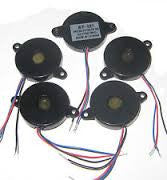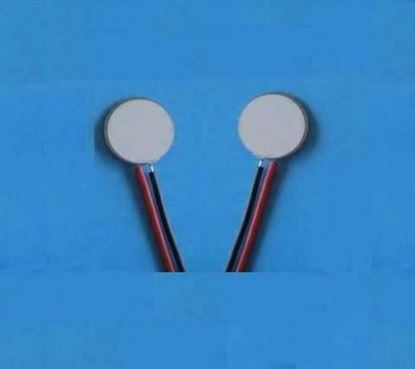


Note that there are two signal output lines - the default DC-coupled (O/P_DC) and the optional AC-coupled (O/P_AC). The four-pin jumper header (J1) is for power supply input (3.3 V to 5 V) and signal output connections. The 1N4148 and the 1M resistor (D1 and R3) constituents ensure better resistance to saturation (and a shorter recovery time). In the circuit, the 2M2 multiturn trimpot (VR1) is for sensitivity adjustment, and the 470K resistor (R1) is added to keep you from going below the minimum required resistance value of 470K that’s crucial (minimum sensitivity level) to keep the circuit dynamic. The inspired design (thanks to Theremino) is very easy to build and plays better than the most vestigial “percussion” circuits that are on the internet (you get a good signal on every surface, for sure). A circuit diagram of the proposed (tried and tested) piezo disc adapter is shown below. You can glue the piezo disc using double-sided thick adhesive tape on a surface to catch vibrations from there (it takes some skill to do a good job). The surface microphone described here is a form of contact microphone based on an ordinary 35-mm piezo disc.
#THREE WIRE PIEZO DISC SERIAL#
Serial.println(val, DEC) // Print the voltage to Serial Monitor Serial.begin(9600) // Initializing the serial port at 9600 baud #define PIEZO 0 // Piezo Disc Sensor-Head to A0īyte val = 0 // Initializing the variable for the voltage value In the serial monitor, you can see that when it’s disturbed, a soft hit will register a low value, but for a hard hit, the value registered is higher than that. Once the hardware setup is completed, upload the code, and hit the sensor head with your finger. The piezo disc sensor head (see above circuit) will keep A0 of Arduino at 0 V until it’s disturbed. Even though the following is an entry-level piezo disc experiment with Arduino Uno, you can use the “piezo disc sensor head” shown here with other projects waiting for percussive velocity inputs.

Once you catch voltage levels from a piezo disc, you can use it for countless applications. A piezo disk basically acts like a capacitor, yielding a voltage when exposed to vibration. Piezo discs have been around since the 1970s, and such cheap (and easy-to-handle) discs are widely used by avid electronic hobbyists and experimenting musicians all over the world. This article is just an introduction to playing with common piezo discs, but the DIY simple surface microphone project (hobbyist’s edition) presented here helps you to capture vibrations from virtually any surface! Piezo disc sensor? Surface microphones are used to record and measure noise in confined spaces and areas into which a standard microphone cannot fit.


 0 kommentar(er)
0 kommentar(er)
